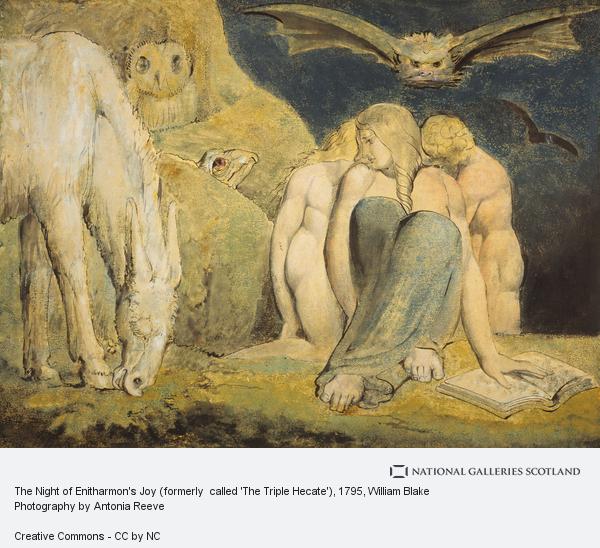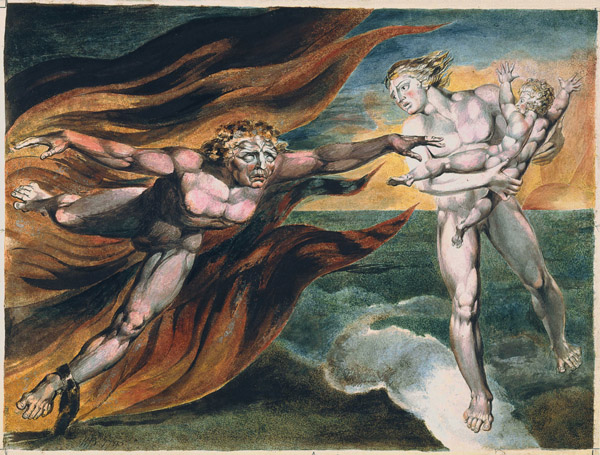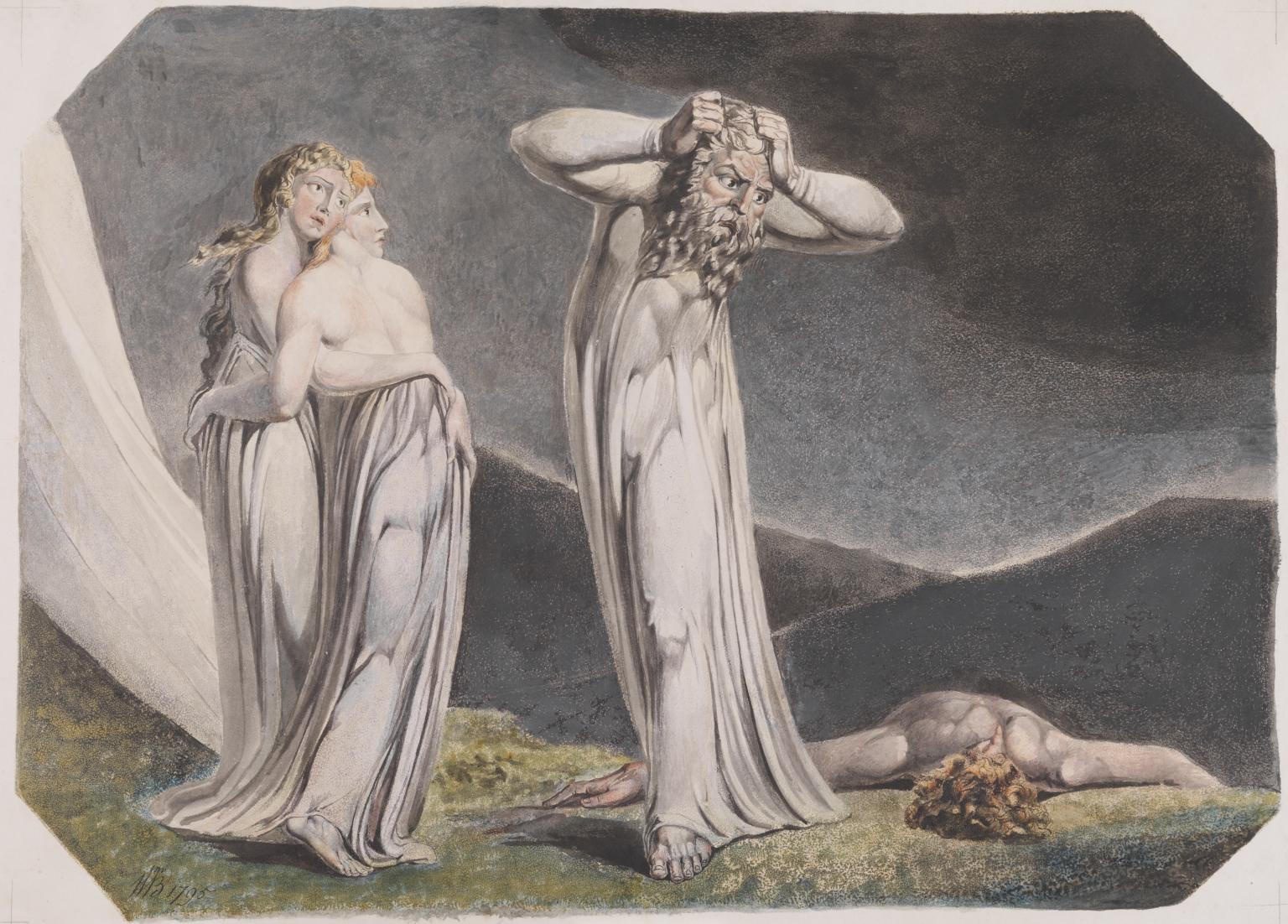 |
| Wikimedia Large Color Printed Drawings Newton |
To Blake who saw the holiness in everything, science, although of infinite value, was in his day being put to the wrong use. Meant to be a servant of man it was becoming his master.
Descriptive Catalogue, (E 536)
"Visions of these eternal principles or characters of human
life appear to poets, in all ages; the Grecian gods were the
ancient Cherubim of Phoenicia; but the Greeks, and since them the
Moderns, have neglected to subdue the gods of Priam. These Gods
are visions of the eternal attributes, or divine names, which,
when erected into gods, become destructive to humanity.
They ought to be the servants, and not the masters of man, or of
society. They ought to be made to sacrifice to Man, and not man
compelled to sacrifice to them; for when separated from man or
humanity, who is Jesus the Saviour, the vine of eternity, they
are thieves and rebels, they are destroyers."
Four Zoas, Night III, Page 38, (E 326)
"O Prince the Eternal One hath set thee leader of his hosts
Page 39
Leave all futurity to him Resume thy fields of Light
Why didst thou listen to the voice of Luvah that dread morn
To give the immortal steeds of light to his deceitful hands
No longer now obedient to thy will thou art compell'd
To forge the curbs of iron & brass to build the iron mangers
To feed them with intoxication from the wine presses of Luvah
Till the Divine Vision & Fruition is quite obliterated
They call thy lions to the fields of blood, they rowze thy tygers
Out of the halls of justice, till these dens thy wisdom framd
Golden & beautiful but O how unlike those sweet fields of bliss
Where liberty was justice & eternal science was mercy
Then O my dear lord listen to Ahania, listen to the vision
The vision of Ahania in the slumbers of Urizen
When Urizen slept in the porch & the Ancient Man was smitten
The Darkning Man walkd on the steps of fire before his halls
And Vala walkd with him in dreams of soft deluding slumber"
Song of Los, Plate 4, (E 68)
"Thus the terrible race of Los & Enitharmon gave
Laws & Religions to the sons of Har binding them more
And more to Earth: closing and restraining:
Till a Philosophy of Five Senses was complete
Urizen wept & gave it into the hands of Newton & Locke"
Milton, Plate 27 [29], (E 125)
"But in Eternity the Four Arts: Poetry, Painting, Music,
And Architecture which is Science: are the Four Faces of Man.
Not so in Time & Space: there Three are shut out, and only
Science remains thro Mercy: & by means of Science, the Three
Become apparent in time & space, in the Three Professions
Poetry in Religion: Music, Law: Painting, in Physic & Surgery:
That Man may live upon Earth till the time of his awaking,
And from these Three, Science derives every Occupation of Men.
And Science is divided into Bowlahoola & Allamanda."
Four Zoas, Night IX, PAGE 139, (E 407)
"The Sun arises from his dewy bed & the fresh airs
Play in his smiling beams giving the seeds of life to grow
And the fresh Earth beams forth ten thousand thousand springs of life
Urthona is arisen in his strength no longer now
Divided from Enitharmon no longer the Spectre Los
Where is the Spectre of Prophecy where the delusive Phantom
Departed & Urthona rises from the ruinous walls
In all his ancient strength to form the golden armour of science
For intellectual War The war of swords departed now
The dark Religions are departed & sweet Science reigns
End of The Dream"
Reading this passage from Norhtrop Frye's Fearful Symmetry we can see that in the image Blake created of Newton, he intended to keep open the possibility that man's consciousness might evolve to the level of vision.
Fearful Symmetry, Page 259-60:
"Man stands at the level of conscious life: immediately in front of him is the power to visualize the eternal city and garden he is trying to regain; immediately behind him is an unconscious, involuntary and cyclic energy, much of which still goes on inside his own body. Man is therefor a Luvah or form of life subject to two impulses, one the prophetic impulse leading him forward to vision, the other the natural impulse which drags him back to unconsciousness and finally to death.
...
The imagination says that man is not chain-bound but muscle-bound; that he is born alive, and is everywhere dying in sleep; and that when the conscious imagination in man perfects the vision of the world of consciousness, at that point man's eyes will necessarily be open.
...
Every advance of truth forces error to consolidate itself in a more obviously erroneous form, and every advance of freedom has the same effect on tyranny...The evolution comes in the fact that the opposition grows sharper each time, and will one day present a clear-cut alternative of eternal life or extermination."
.


.jpg)





.jpg)

